Las Invitadas
Sharing the beauty of San Blas with visitors
As our time in the San Blas stretched like a sleepy cat, we stopped wearing shoes. Wearing so-called “foot coffins” we could no longer feel our feet in contact with the ground. So we gave them up. We were swimming, snorkeling and walking barefoot in the sand. We were mostly on the water, slowing down, living simply and freely. We didn’t need to race the clock to get somewhere, nor did we have to be concerned about dressing up to go out in the world like we did when we lived in the city. The pressure was off, with less laundry and more time to reflect on life and what actually makes us happy.
We were looking forward to having some visitors on Salacia which would be the first time since we were sailing in Mexico. Our niece Jodi and her friend Kyra were planning a visit for about a week. Jodi is our first niece (or nephew), the child of my late brother, Jack, and his wife Karen. She’s in her mid 20s and has been working hard in her job as an engineer. This trip was going to be a time for her to relax and enjoy the sun and warm water with her close friend from college. At the time, Kyra lived in Chicago, and Jodi lived in Boston, so they didn’t get to see each other often enough.
We love having visitors as it gives us a chance to share our adventure with loved ones and we get to live our experience through theirs, so we were excited to share our life on the water with Jodi, especially in such a unique part of the world. Visitors help us to appreciate our lifestyle even more, as we get to see them light up as they react to new surroundings for the first time, plus we love hosting. We also loved that she was up for the adventure, as it is not for the faint of heart. Guna Yala is in one of the more remote areas of Central America, so it would take a long flight, a jeep ride and then a water taxi to get to us.
Spending such an extended time in San Blas helped time slow way down, which allowed us to connect more deeply with the rhythms of nature and feel the remoteness of this wild environment. The myth built up around cruising is that you’re sailing into true wilderness, independent and self-sufficient, and while it is true that a sailboat makes most of the world directly accessible in a way that no other means of travel can, it’s also true that you’re always connected by a slender, elastic thread of dependence on the services and products of civilization.
Nature in and of itself is completely indifferent to our presence, with the ability to extinguish our little spark like a tidal wave extinguishing a camp fire on the beach, utterly and irreversibly. The only thing that allows us to extend our presence in these remote places is our connection to civilization — finding diesel fuel when we need it, and spare parts, as well as food. While we can make our own water, the water maker requires regular maintenance to be reliable, and spare parts to fix it when it fails. While we get to spend time on tropical beaches with cold drinks in hand, it’s easy to see how brutal life could be without the services we bring along, and without the services provided by the communities we visit.
Once it was time to meet Jodi and Kyra, we sailed to Salardup to meet their water taxi. Jodi had a long day of travel from Boston to Panamá City, where she met up with her friend Kyra for the night. Waking up at the crack of dawn after a sleepless night from all the loud music and partying happening at their hotel, they climbed into a jeep for the three to four hour drive across Panamá and into the Guna Yala Comarca, before boarding a water taxi for another hour or more to get to our boat. We waited patiently.
As soon as they got onto the boat, the first thing they did was jump into the water to cool off, feel refreshed and ready to go! Go where? Well, maybe a dinghy ride to the beach to check out the small island where we were anchored. But mostly Jodi and Kyra wanted to chill out and relax after a long arduous journey. They made it to paradise and wanted to soak up its serenity!
Well, relaxing on the boat didn’t last long as we planned a boat trip tour with our friends, and timed it so we could take Jodi and Kyra with the group. It was an opportunity for them to experience an indigenous culture and the wild jungle.
The trip was led by a Guna woman named Mola Lisa. We met Mola Lisa when she came to our boat to welcome us when we first arrived in San Blas and to sell us her colorful and meaningful molas. She was very talented. The tour she would be leading started with a trip up a river on the mainland, followed by a hike through a local community and up into the mountains, to a large waterfall, and finally a hike down the river, jumping off waterfalls, swimming through placid pools, and hiking the shallows back to the boat that would return us to our anchorage.
The Guna people generally live long lives, and Mola Lisa’s parents were no exception, finally passing at the age of 105. The Guna credit their longevity to their daily connection to nature, and their natural diets of fruit, fish, vegetables and cacao. Cacao is considered a medicine which has a lot of antioxidants and improves circulation and the heart. Her son unfortunately died at a very young age of 16 years. We are not aware of the circumstances surrounding his death.
Afterwards, she led us on a path through the green tropical jungle of indigenous plants and flowers for about an hour to a beautiful cool clear river where she spent a lot of time as a child, swimming and playing in the rapids. Her ancestors related to this river as sacred due to its pure clarity.
We each brought our lunch as we were instructed to do but when it was time to eat we learned that Mola Lisa and her crew did not bring any food for themselves. In fact they were expecting us to share ours with them. It was an interesting lesson in the generosity of Guna culture. We felt a little ashamed for not thinking of them ahead of time but it turned out we all had plenty to share. It’s funny how self-reliant sailors can be which is primarily for safety.
After lunch, we hung out around the river and took turns jumping off the cliff into a deep pool of clear, fresh water. We were met by hungry fish nipping us which didn’t hurt but left a feeling of surprise and anticipation.
The rest of the day Mola Lisa led us down the river, swimming or wading, walking on rocks and jumping off the sides into clear, deep pools. We weren’t able to get a video because we had to keep our phones dry. Ingrid and I carried the dry clothes and phones down to a meet up spot. The trip took longer than expected because everyone had to be careful not to slip and fall as they walked across logs and on slippery rocks. After we all met up again, we walked back on the trail to the boat that brought us there. It was an exciting and fun day in the jungle.
When we got back the four of us made dinner and hung out on the boat enjoying the peacefulness of the night, gazing up at the stars while bobbing around the anchorage, head to wind. There was plenty of breeze to keep the boat cool and we all went to sleep early. It’s one thing we love about our lifestyle. We are active enough to feel tired by the time it’s dark and we wake up early with the sunlight. The next day we all felt rested enough for a sail.

We were excited to share a special spot in San Blas that we named Emoji Island, for its resemblance to this emoji: 🏝️. This small island, just south of Isla Verde where we anchored, is not only adorable, but the snorkeling around it is particularly sweet, as it’s surrounded by a shallow reef to the north and the west. We’ve seen schools of squid flying in perfect formation, reef fish in ultramarine blue and florescent yellow, octopi, and of course many types of soft coral, anemones, and sea fans. Kyra saw the large ray that lives around there, and no one got out of the water feeling disappointed with what they had seen. Afterwards, our reward was a walk on the island in the soft, white sand before heading back to the boat to start preparing dinner.
After a couple of wonderful days, we enjoyed a downwind sail back to Salardup where Kyra would be picked up first to take her back to Panamá City early the next morning. It was surprising how fast the time flew! But first, one last dinghy ride around the anchorage with the hopes of catching a fish for dinner!
After Kyra left, we got to spend a couple of extra days with Jodi which was sweet. We took her fishing which was funny as she really doesn’t like to kill anything. Luckily she caught a skipjack which we let go since they aren’t very tasty. Jodi spent the rest of her time playing in the water, jumping off the bow and swimming to the back of the boat to get out, just to walk back up to the bow to jump off again. She couldn’t get enough until it was time to get out of the water because the sun was going down. It was cute to see her playing like she was a kid again.
It’s not often that we get visitors on Salacia. When we do it’s really special and we love the opportunity to share what it’s like living on a boat in a beautiful country unlike any where else we’ve been.
San Blas was the most special part of our journey. It was remote, wild and peaceful. The Guna are very friendly and welcoming, with a long tradition of trade with visiting sailors, coming out every week to bring us fish, local lobster, vegetables, and even deliveries from the mainland. For such a remote place, it’s one of the easiest cruising grounds to spend time in, since with their support, we didn’t have to search for stores and spend time buying groceries. We even had our new sails delivered to us there.
Once we arrived, sailing around the islands was easy, and there are plenty of islands to visit, with some three hundred forming the archipelago, across the inner, outer, and middle reefs. Climate change is definitely having an impact here though, since many of these islands only stand a foot or two above sea level. With the mean sea level rising, you can definitely see some islands eroding. They’ve even had to relocate whole towns from the islands to the mainland to avoid the encroaching waters. It makes me feel sad for the Guna who rely so heavily on nature to survive. Then again, don’t we all.
Once our guests left, we had a short time remaining in San Blas, and as with every departure, there is a period of increased appreciation of where you are. Even though we’re sad to be leaving, we’re looking forward to new adventures, while handling the uneasy anticipation of challenges soon to be faced. After four months cruising the San Blas archipelago, we would now be setting out to sail from Panamá, against the trade winds and the massive waves they produce, along the northern coast of South America, into the islands of the eastern Caribbean. Stay tuned to hear about our challenging upwind passage to Colombia, against the strong currents and into the waves.
We hope while you’re reading this, you’re thinking, “Hey! I’d like to come visit too!” If that’s the case, then reach out and let us know. We love to have visitors, and we love to hear from our readers, both our friends and family, and our newer subscribers. Thank you for keeping up with our adventures!







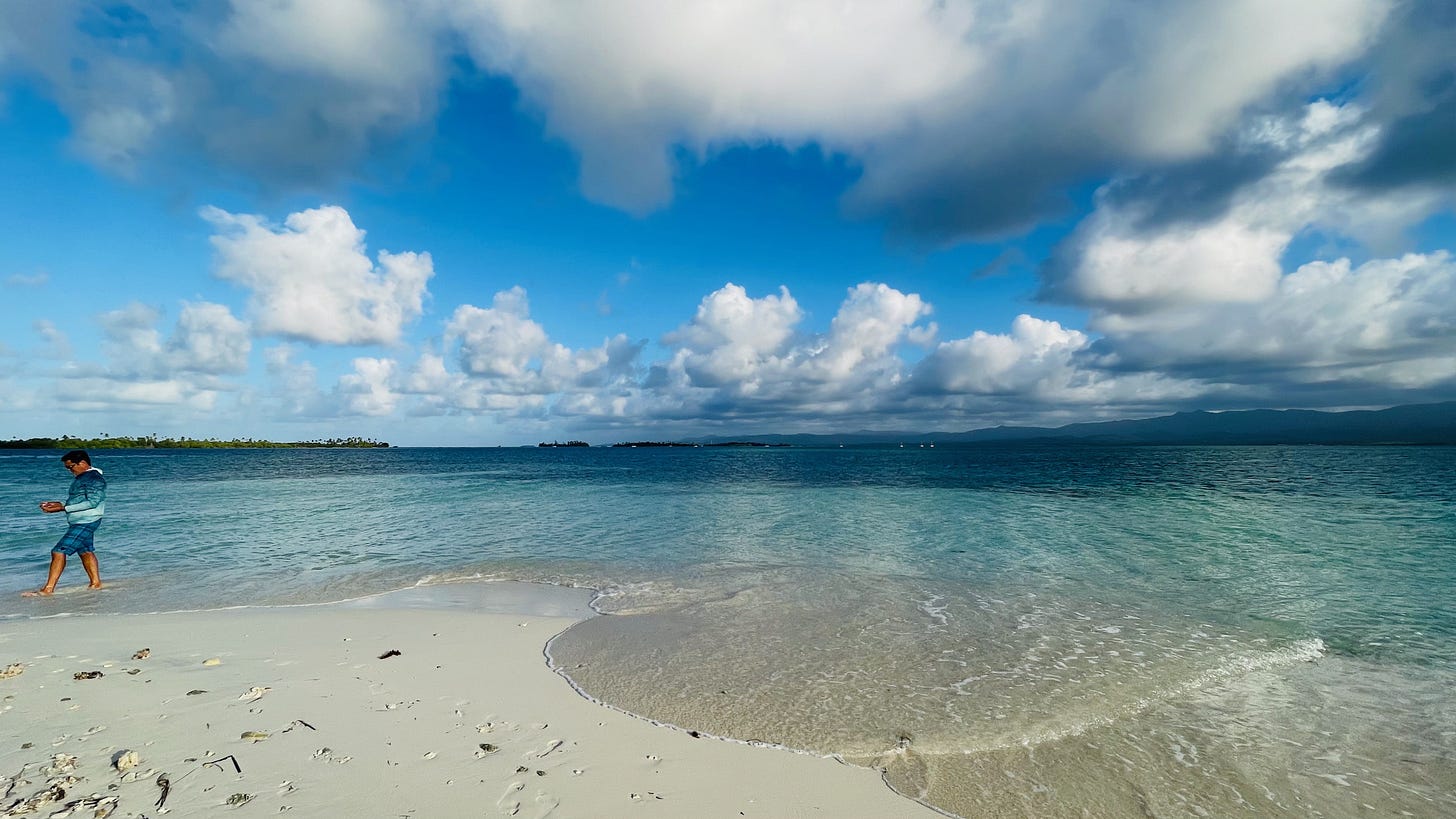
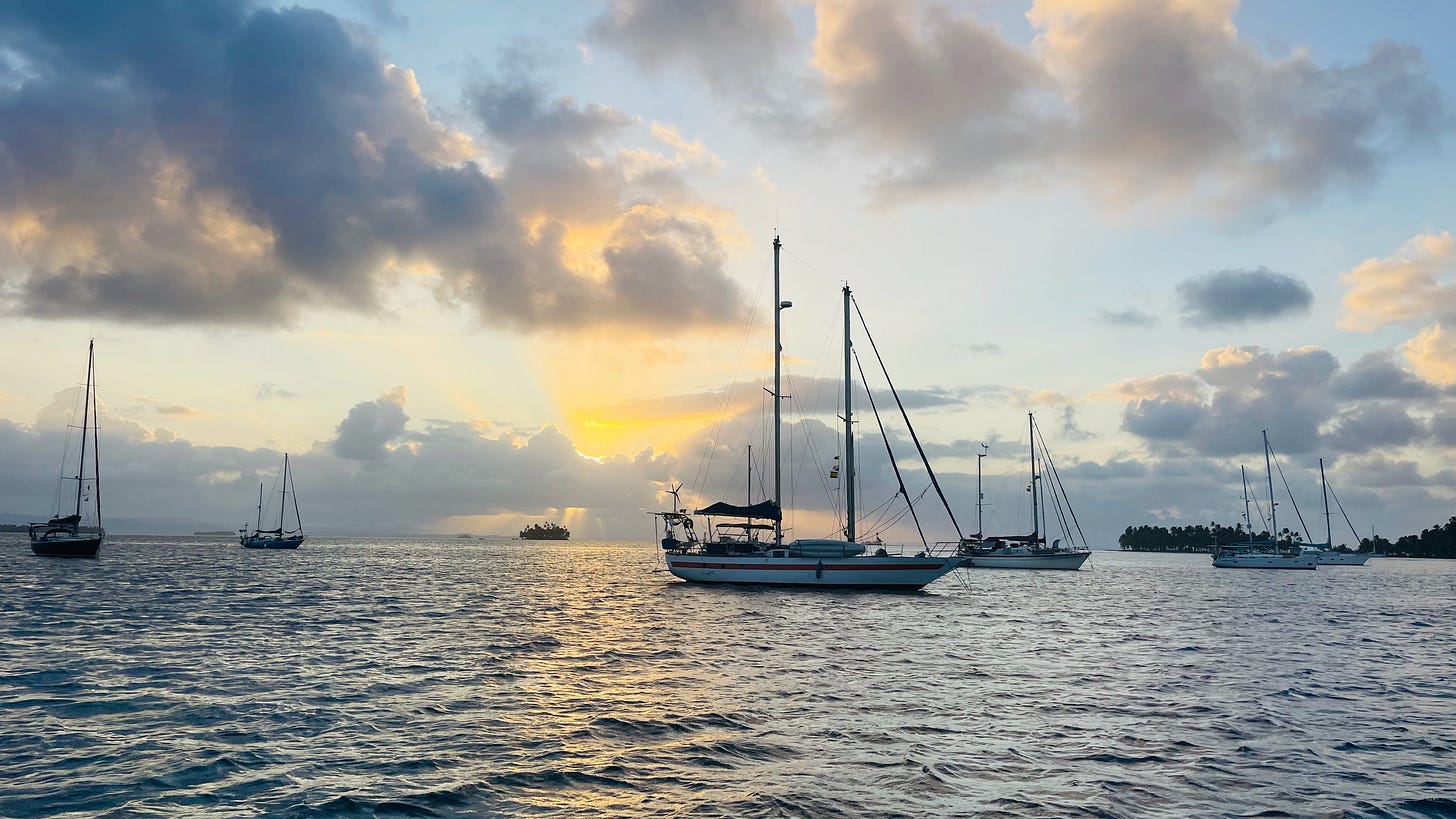



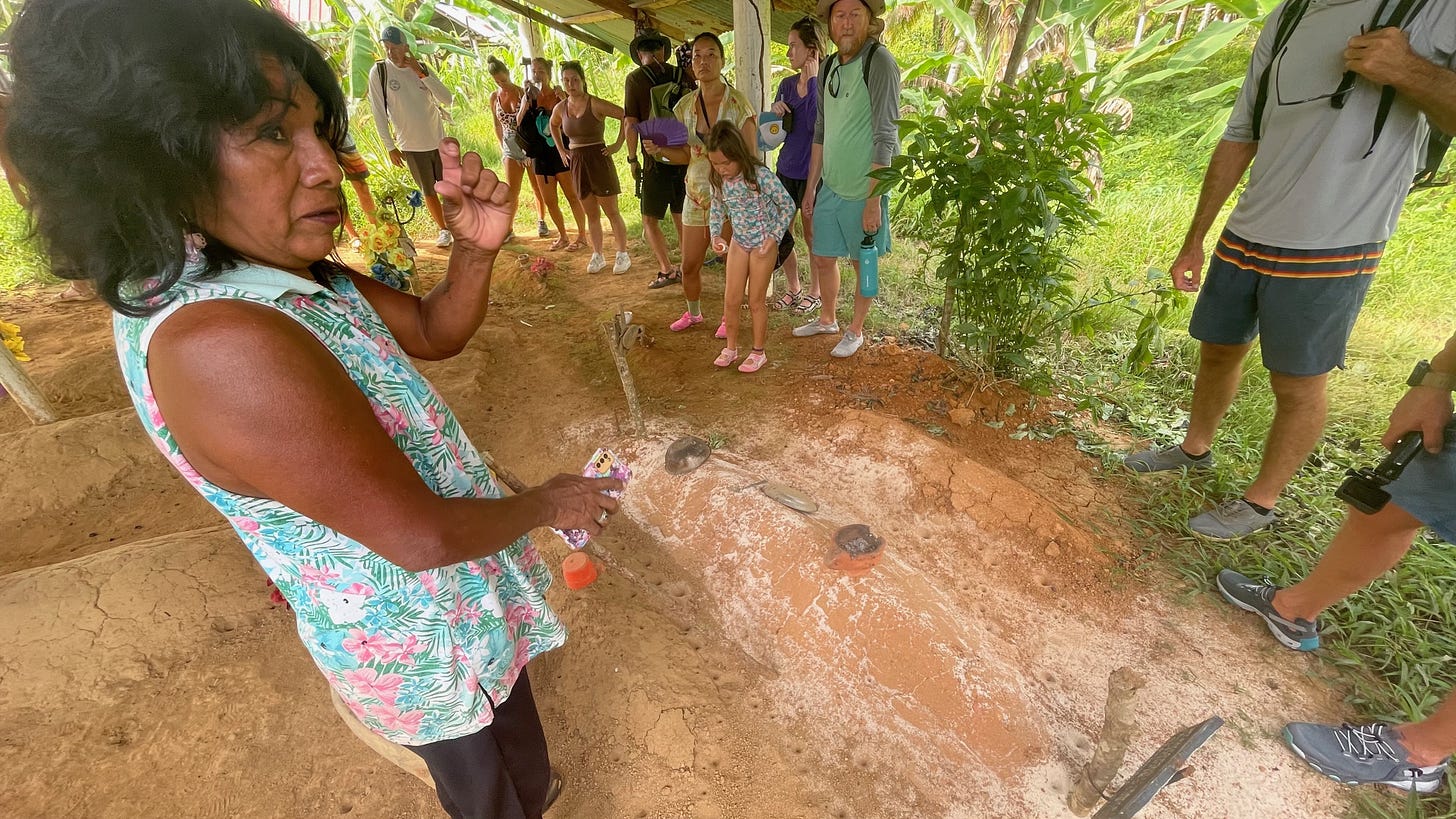
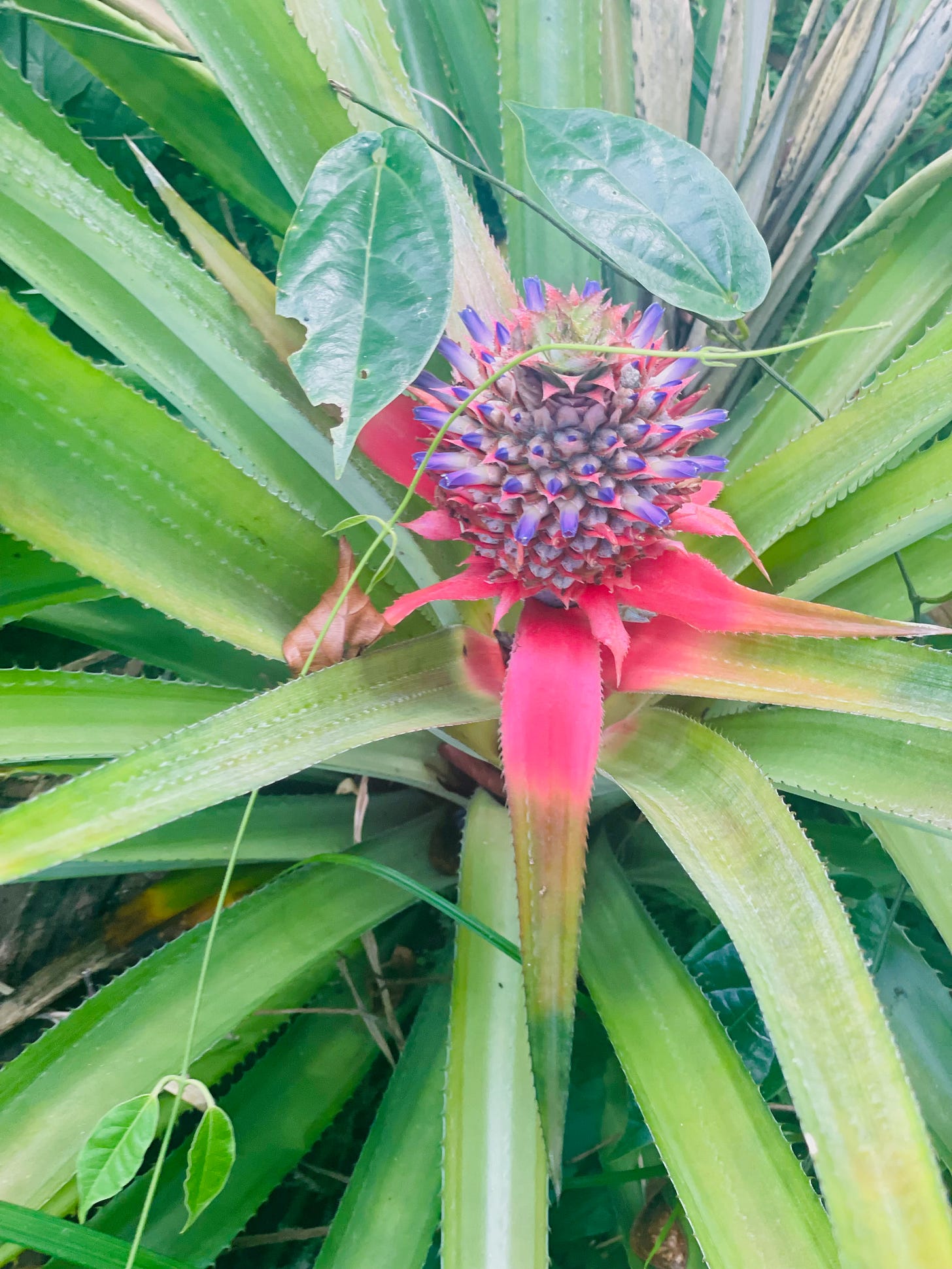
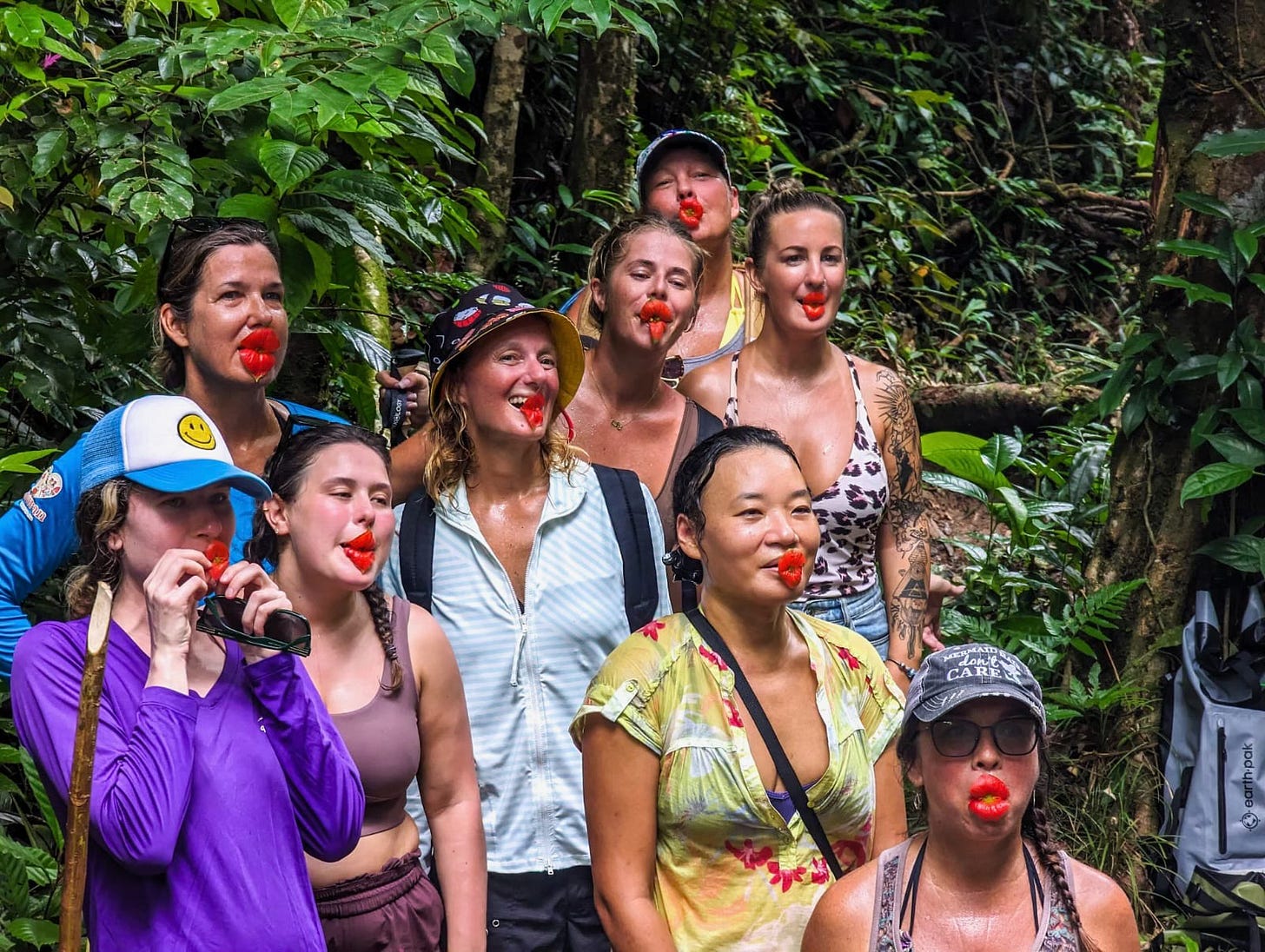

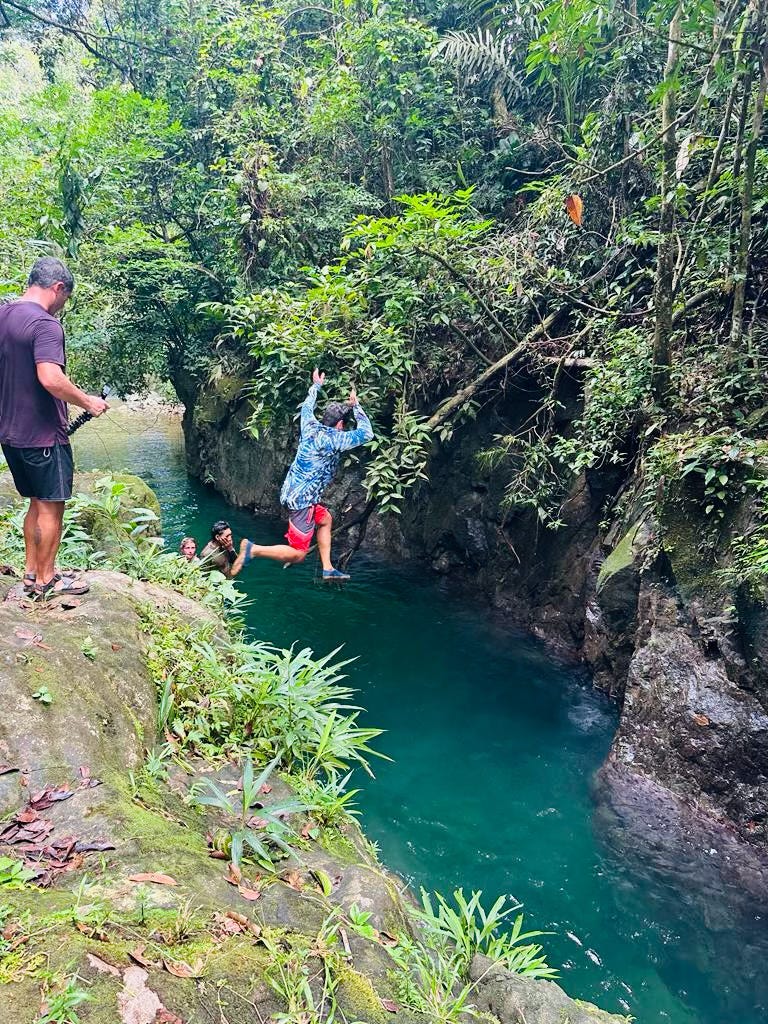
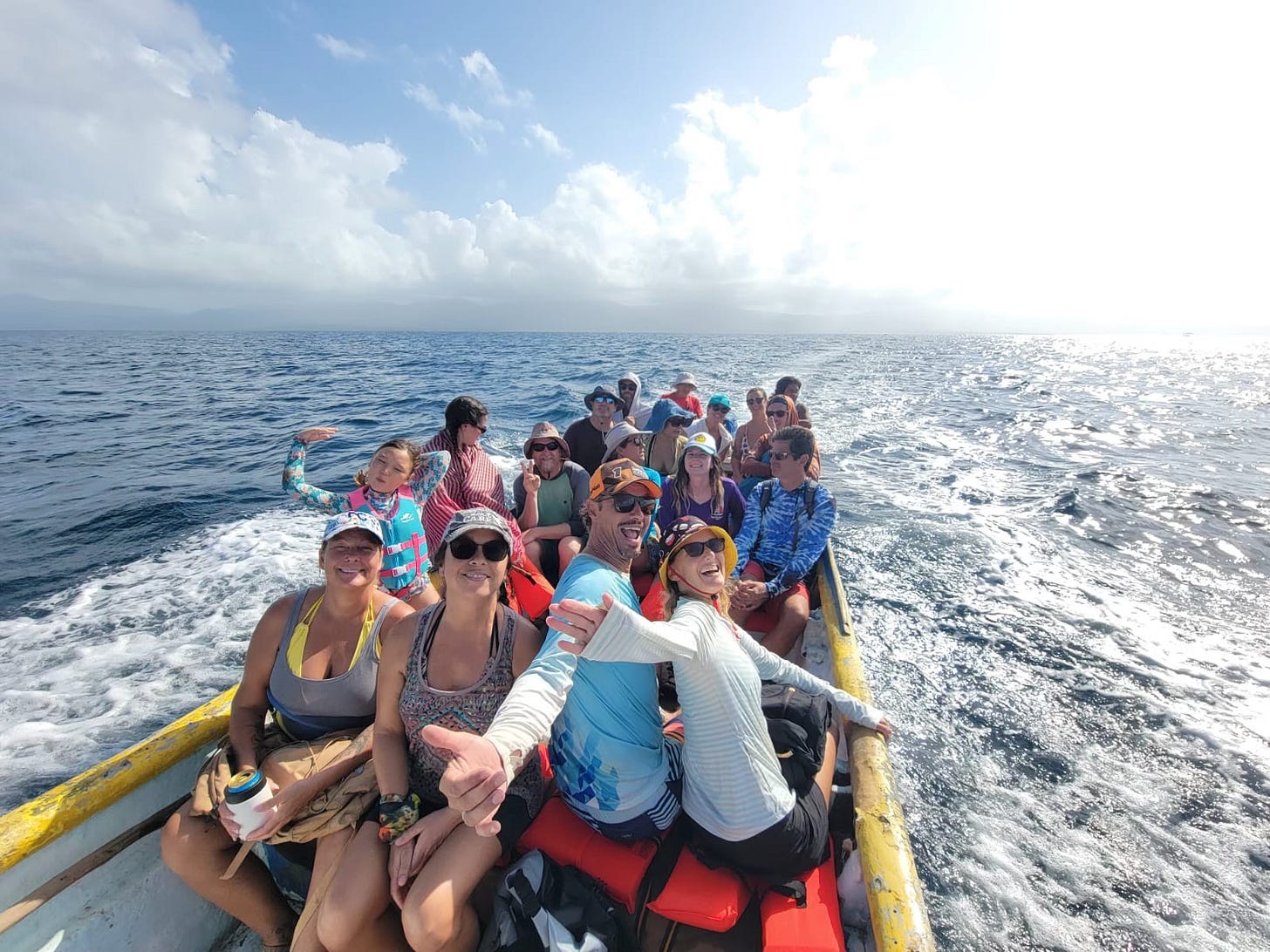
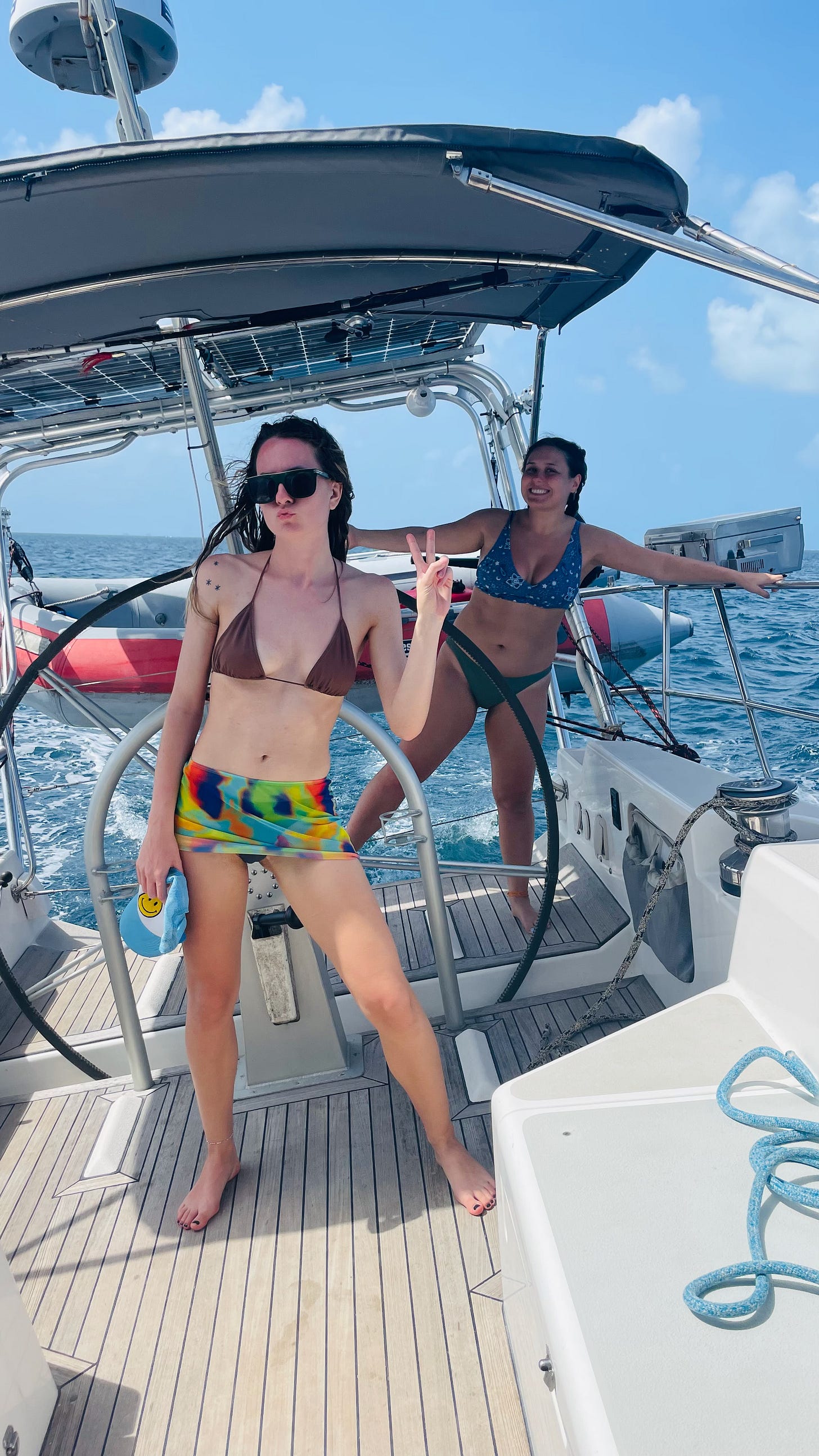
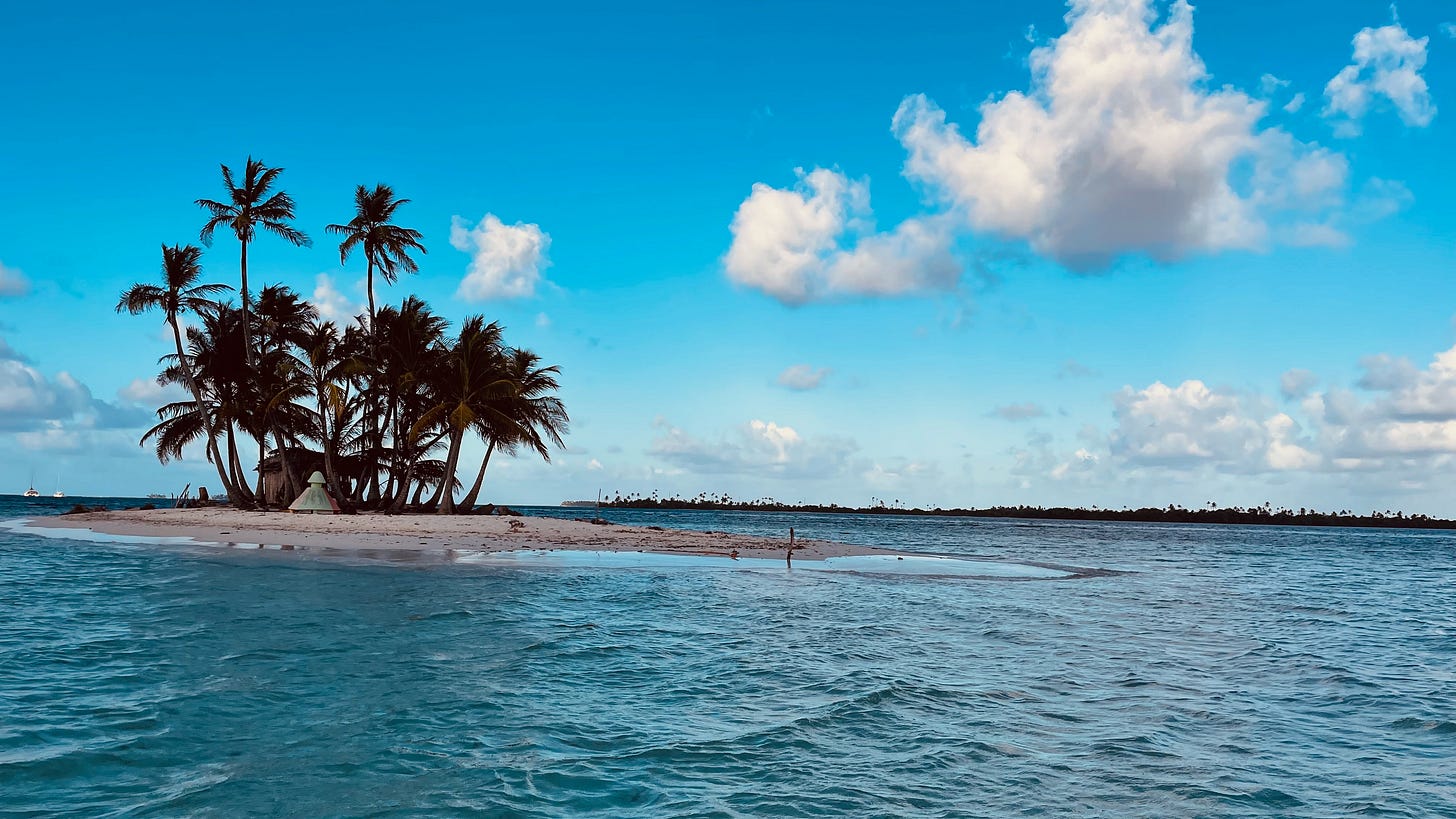
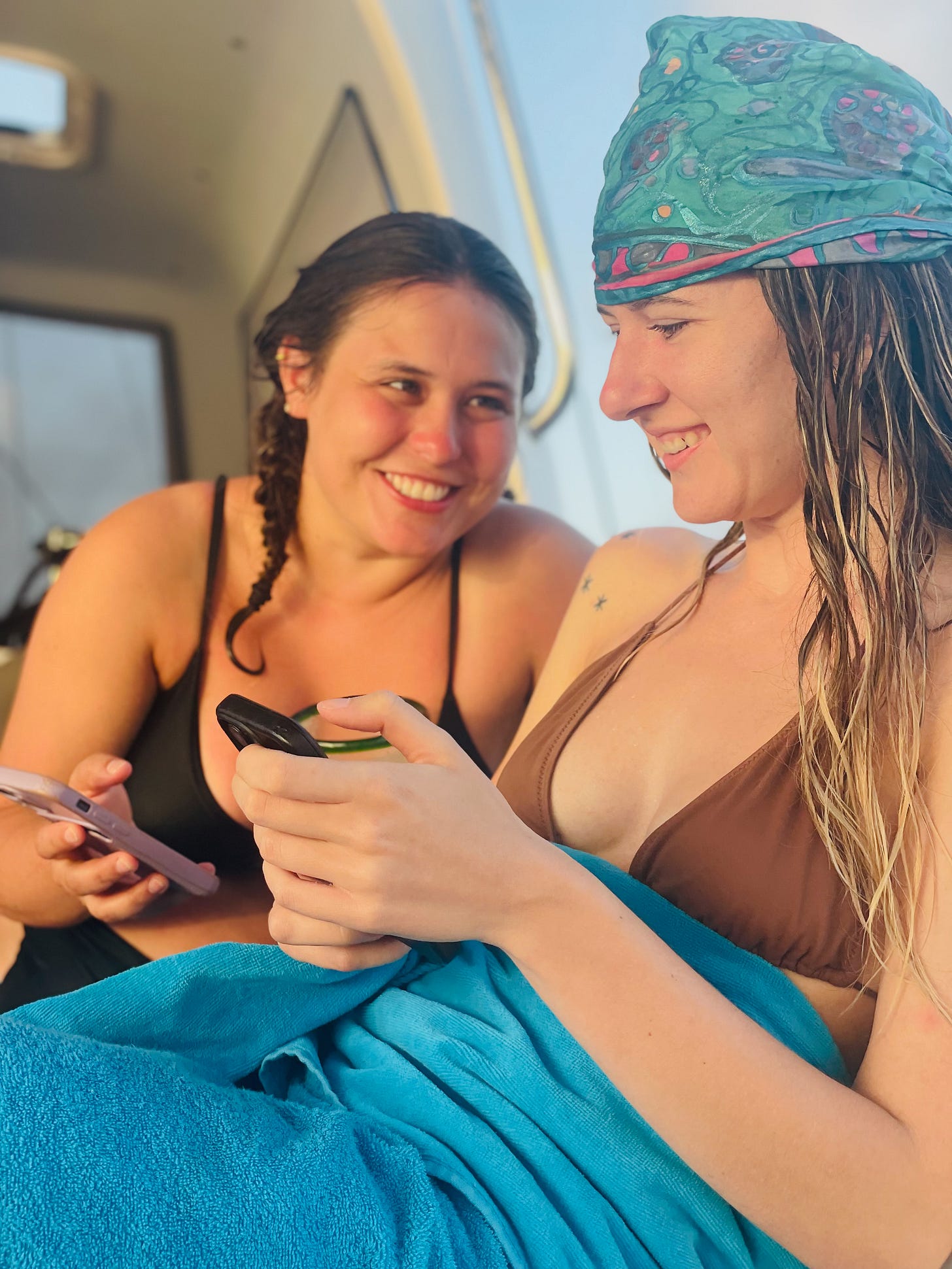
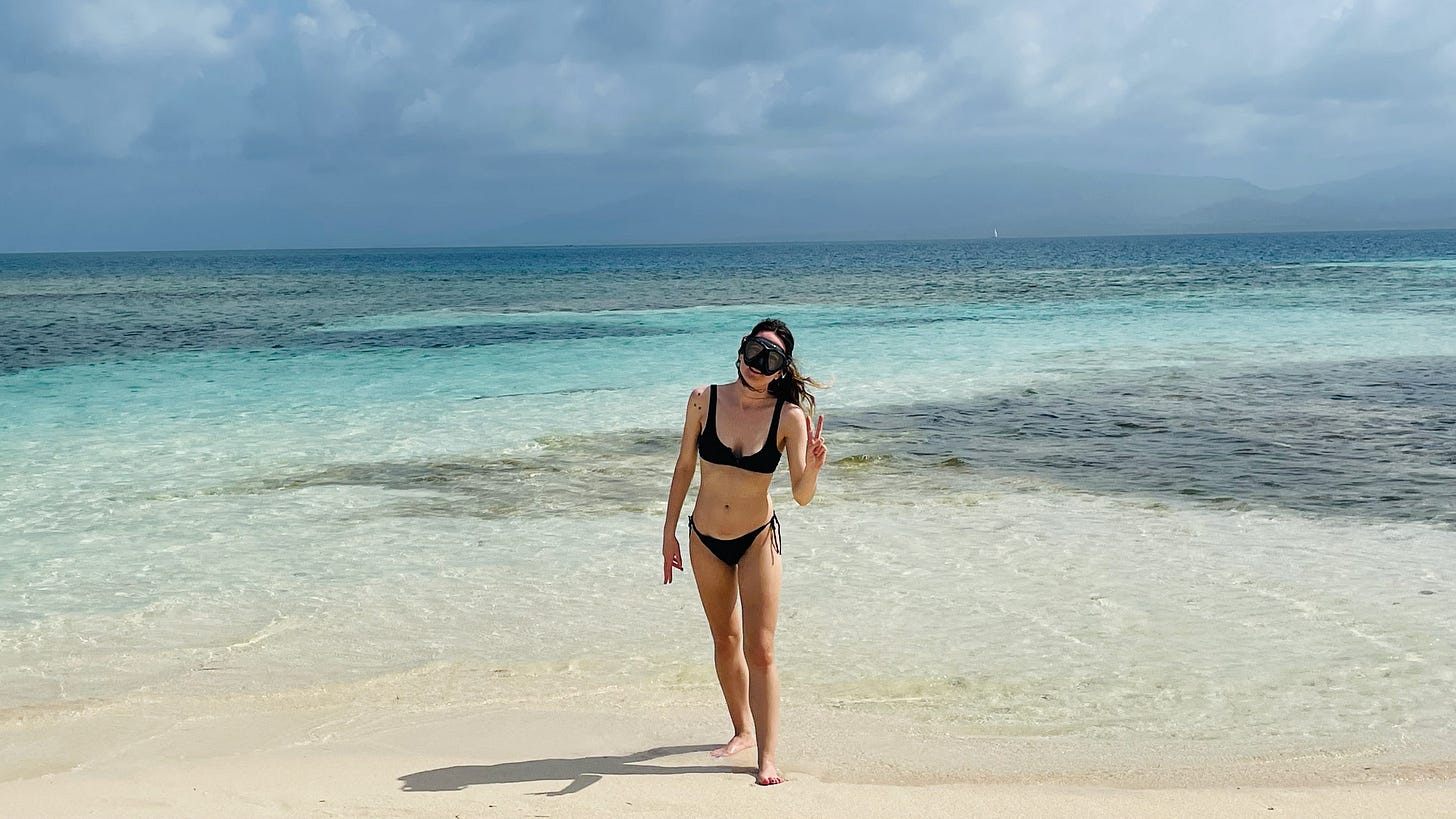



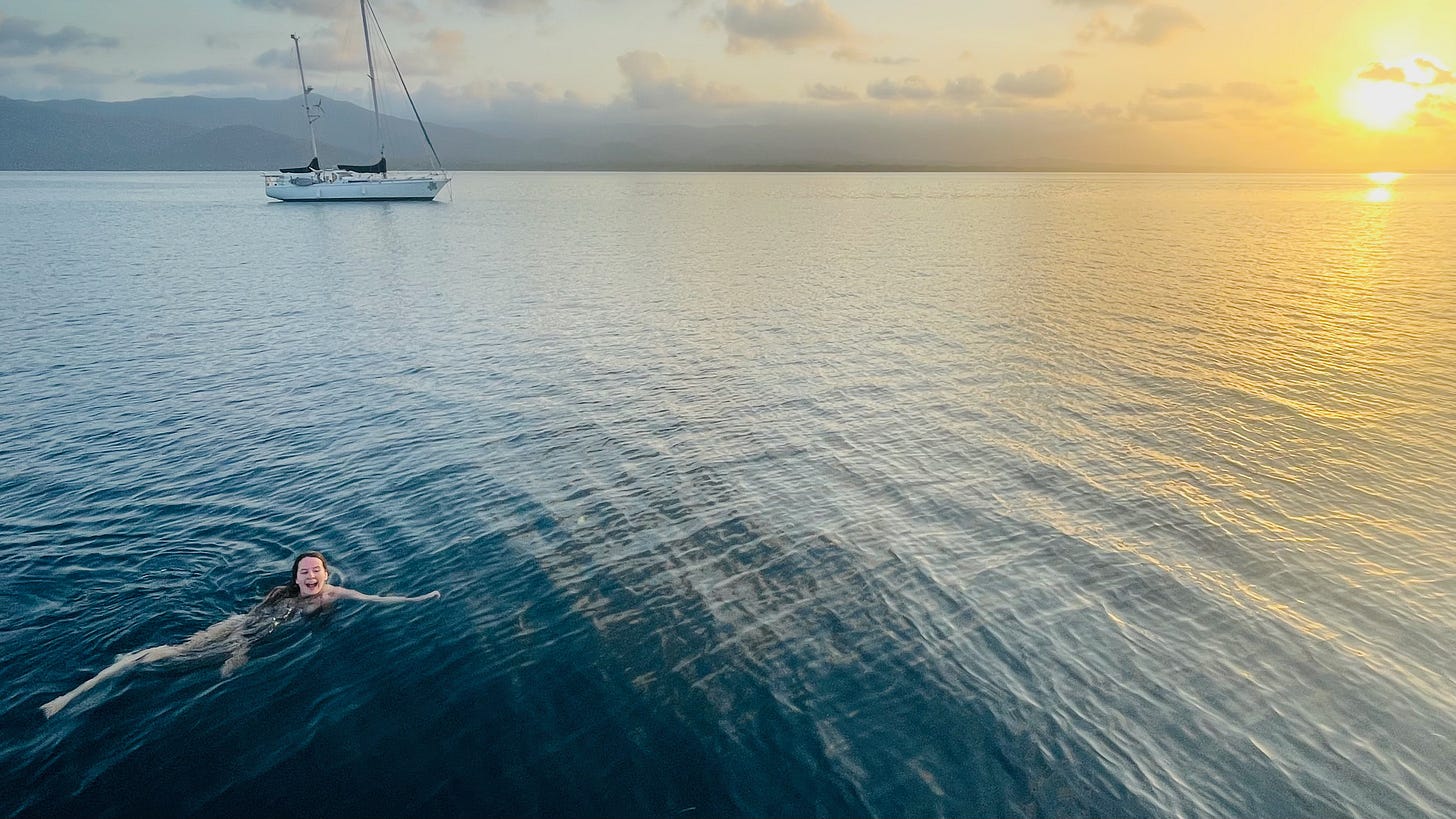
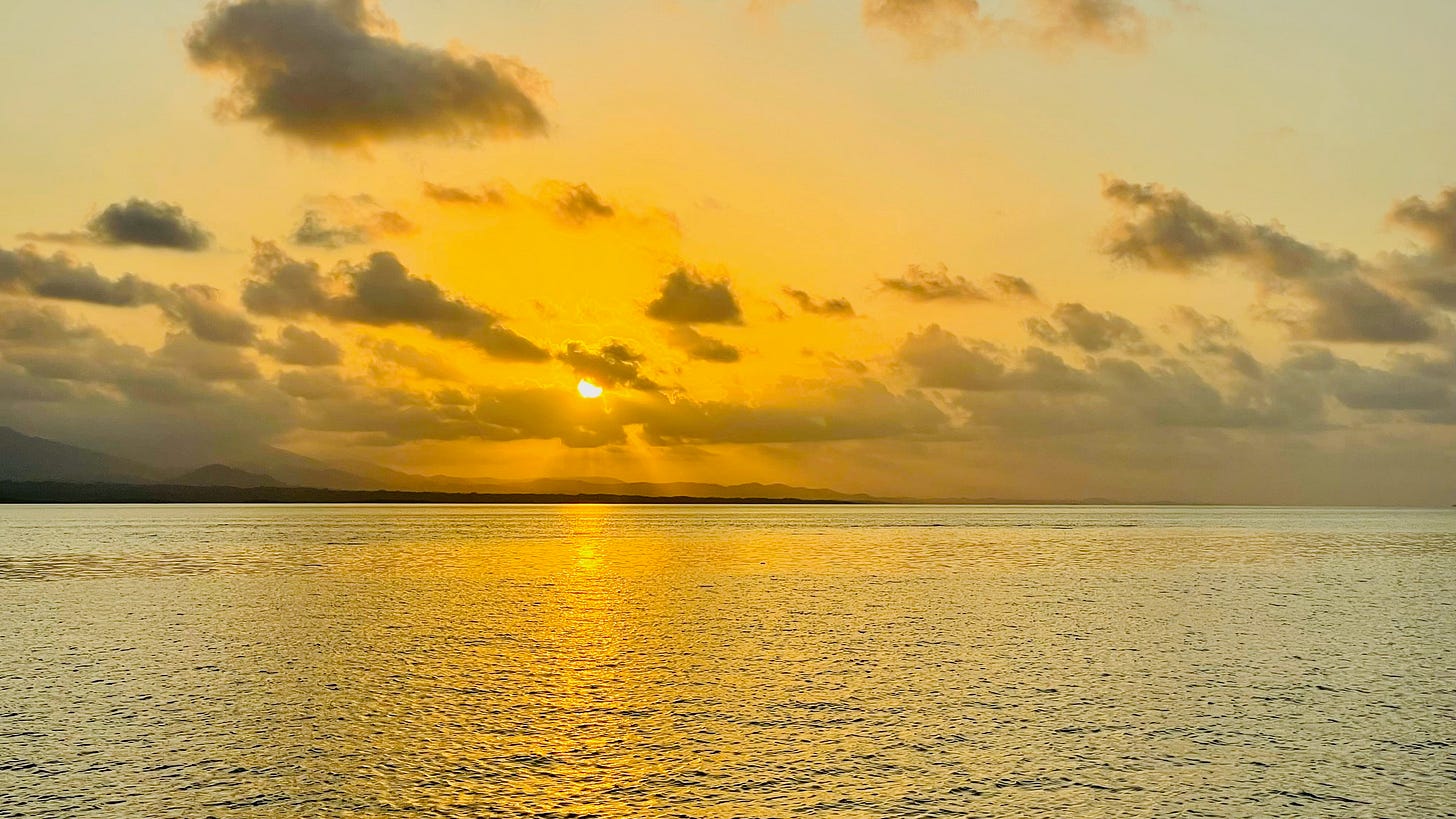
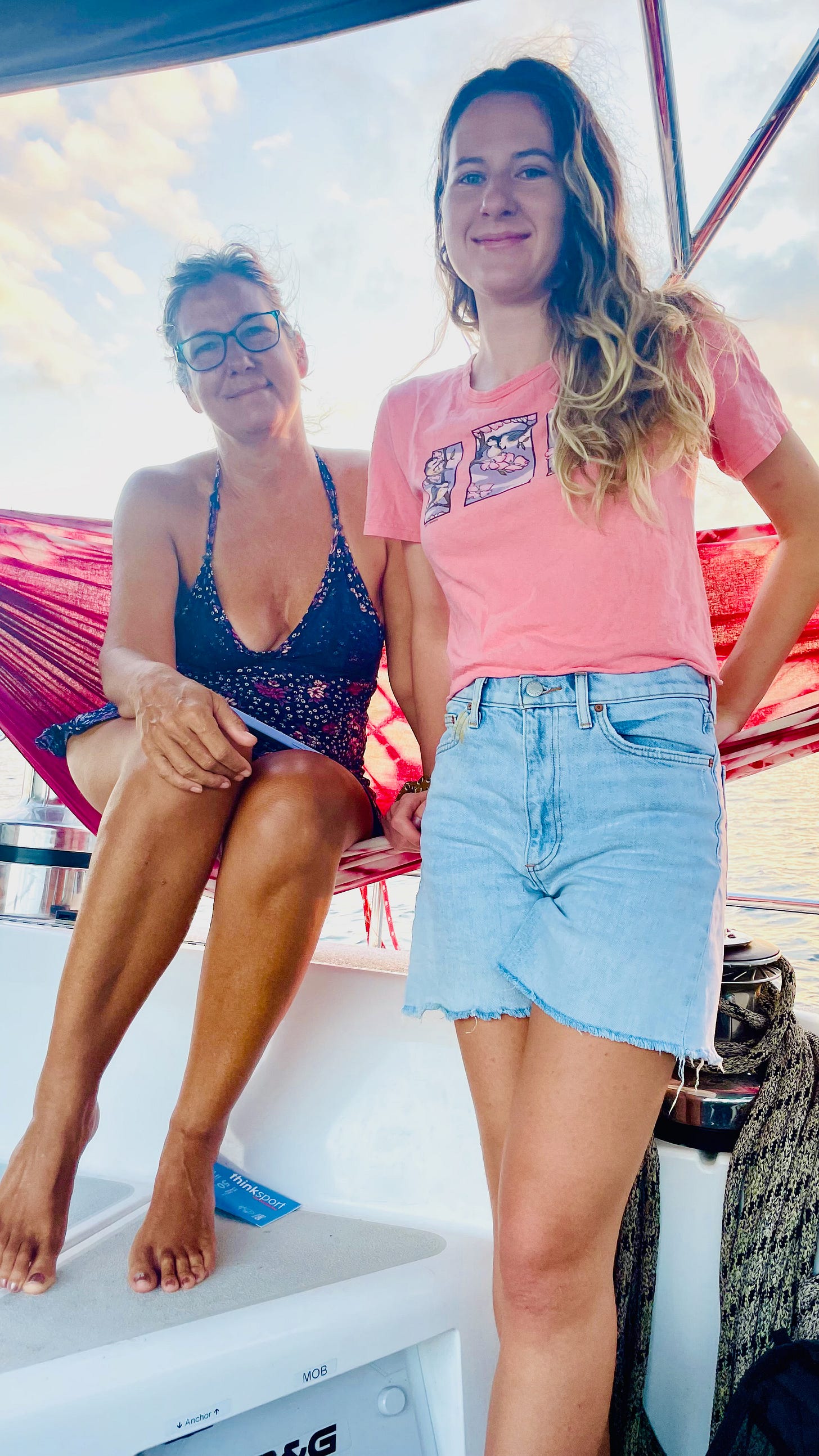
Hi Peter and Donna, wonderful travelogue. I’ll look it up on the globe and Google. Glad you’re well and back on the sea! Love, Rose and Dan